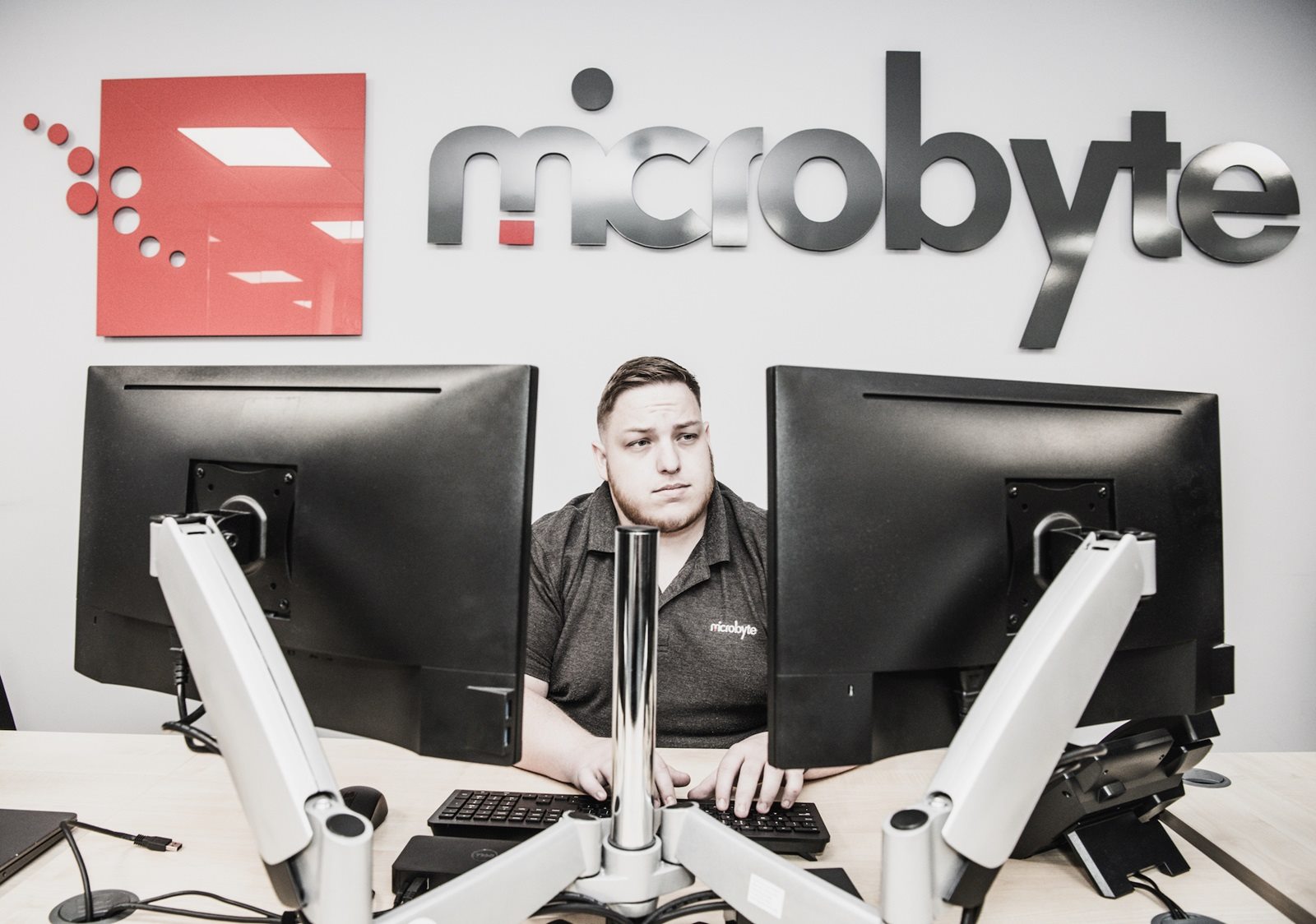
Small businesses and larger enterprises wrestle with managing their IT infrastructure, current requirements, and future demands. Choosing between on-premises and cloud computing is pivotal as it significantly changes the underlying approach to IT infrastructure and operations.
Why Local Technology Was Previously Attractive?
Previously, IT departments saw all technology-related operations as coming under their purview. As their fiefdom, they influenced IT expenditures and controlled planning, deployment, management, and maintenance. Giving that up required a paradigm shift in thinking.
For small teams, virtual machines were used to provide a safe environment where legacy systems and newer software could play nicely together. The cost to move away from legacy applications was often impractical. The investment to rebuild these systems from scratch was considerable, and fear surrounded the expected downtime when trying to do so.
Local technology, including running an on-site data centre, was still preferable. It was self-contained, controllable, and cost-effective. Cloud computing was barely in its infancy a decade or so ago, and the general thought was that it would create additional problems for IT managers, rather than solve or remove them.
Understanding On-Premises Solutions
Small to medium-sized enterprises (SMEs) typically found on-premises IT solutions came with considerable initial capital outlay. This was cost-prohibitive for cash-strapped startups and homegrown businesses.
IT Investment and Maintenance
Purchasing bare-metal servers, multiple software solutions, and setting up wired Ethernet networks required considerable implementation time.
Proactive IT maintenance was necessary to ensure IT infrastructure failed infrequently. A team of highly trained IT personnel was present to deal with issues as they occurred.
Data Security
Data security was a factor for many businesses to justify their considerable on-premises IT investments.
In an age of reported cloud breaches, security could never be overlooked. This was especially pertinent for companies operating in the financial sector, manufacturing, and those with more significant security requirements.
Compliance Requirements
Regulatory compliance is a serious concern for various industries, from finance to manufacturing.
A few years ago, it was an easy crutch to justify sticking with on-premises even when some competitors began investing heavily in cloud solutions.
Virtualisation Implementations
Virtualisation and use of virtual machines created safe, contained environments inside on-premises servers. Operating virtual machines at an acceptable speed requires a higher-than-average hardware specification. Further encouraging IT decision-makers to stick with in-house investments.
This was especially true for accessing legacy systems using virtual machines. Some older IT equipment could not be relocated to a distant data cloud.
Low Latency Needed
Under some circumstances, older systems require low latency. This was not the time to access them using slow data connections. Cloud technology was seen as a hindrance to fast, smooth IT operations until broadband became quicker and more reliable.
However, this changed as cloud implementations rapidly caught up with business needs. Internet connections in the office, at data centres, and for remote workers improved so that latency issues were removed as important considerations.
A Changing World
Certainly, global health concerns circa 2020 and the incredible rise in remote working played an important part. Yet, it is also fair to say that many businesses and IT solution providers have already been moving in this direction for years. Other businesses needed to play catch-up.
Exploring Cloud Solutions
Cloud computing, whether via a public cloud or a private cloud, is an IT framework that removes the need for extensive direct IT investment. Instead, an IT service provider operates the servers within their data centres.
Services are virtualised inside cloud computing platforms. It is done across multiple servers and data centres. Numerous redundancies are in place to increase cloud reliability. Resources are scalable to meet increased workflow requirements or unanticipated staffing headcount changes.
Instead of investing in bare metal, installing software applications, and maintaining the data centre, the workload is largely outsourced. Freeing up the IT staff to use the cloud service in the most productive way possible.
Companies use the cloud in different ways depending on need. For example:
Software as a Service (SaaS) – Many SaaS providers offer access to their apps through their cloud environment. Allowing businesses to use their data using application programming interfaces (APIs) and other technologies to their best advantage.
Platform as a Service (PaaS) – Companies use their public or private cloud implementation to deploy and run their in-house apps. Cloud software is hosted effortlessly in a clustered environment, delivering better scalability and portability.
Infrastructure as a Service (IaaS) – This less-understood aspect of the cloud provides access to robust storage, RAM, networking, and computing resources. Each confirms that the cloud is scalable and offers ultimate flexibility in an ever-changing business environment.
Exploring Cost Implications
Unexpected capital expenditures and substantial upfront investments are minimised when using cloud services. Cloud platforms rely more on ongoing operating expenses (OpEx) passed onto clients, instead of lumpy, ill-timed expenditures.
While reducing initial costs, companies cannot escape the requirement to pay for the inevitable expense of hardware, software licenses, etc – although these do come as monthly subscriptions, per seat/user licenses, and other adjustable expenses based on needs and usage patterns.
Companies benefit from flexible cloud computing models. It allows them to get started for much less and manage ongoing IT infrastructure optimally. Predictability is a key factor here. Expenditures based on cloud type, platform specification, and other aspects remove the mystery from IT budgeting.
Technology waste is avoided by only paying for access to relevant hardware and software. This avoids overinvestment in IT infrastructure and a need to explain it later to the higher-ups.

Comparing On-Premises vs Cloud
Key differences between on-premises vs cloud services are highly relevant.
Here are some direct comparisons:
Control
Cloud: Data ownership must be made clear in the cloud environment. Should a cloud service become inaccessible, companies struggle to manage it. Numerous redundancies are now implemented to prevent these types of negative outcomes.
On-premises: IT teams must be on standby to manage all IT requirements whenever they occur. This puts smaller teams under extra strain by needing to be on call or to work longer shifts. Indeed, the need to be a Jack of all trades is increasingly impractical, as computing requirements grow annually. Some sectors with deep regulatory requirements may still opt for on-premises.
Expenditures
Cloud: The cloud computing business model lowers upfront costs, thus reducing financial speed bumps. Total costs may sit at or below on-premises expenditures, depending on how prudently cloud services are selected and utilised.
On-premises: There are significant initial and ongoing server, software, physical space, power, backup power, and redundant system requirements. Necessary but infrequently used infrastructure is costly versus alternative on-demand availability in the cloud.
Deployment
Cloud: The service provider deploys and hosts on behalf of their client. Additional software or access to specific SaaS are just a button click away.
On-premises: In-house deployment gets more complicated as the need increases. Multiple technical staff are required to cover all the bases. All IT infrastructure must be maintained to offer 24/7 availability.
Security
Cloud: Advanced security implementations in cloud environments ensure higher security levels for clients. Only companies with advanced security personnel may believe they can do better.
On-premises: Stiff regulatory requirements for security may require companies to keep some or all of their IT infrastructure in-house. However, private cloud environments and stricter adherence to regulatory standards validate the use of a cloud environment. Cybersecurity is rapidly evolving, making it tough for small IT teams to maintain adequate cyber defences against potential malware or other attacks.
Making the Transition
The transition from on-premises to cloud computing requires a detailed plan of action. Issues such as private or public cloud, software and data migration, cloud applications, in-house training, and potential downtime are relevant.
In some scenarios, a gradual implementation to receive the benefits of cloud computing without any inconveniences is valid. Indeed, a hybrid cloud model exists where companies hold some IT infrastructure back either long term or to deploy gradually. Thus allwowing IT personnel to assess the success of initial cloud deployments and leads to a better cloud experience.
Why not discuss moving your IT infrastructure to the cloud with our team at Microbyte. We will fully explore ideas on how to proceed, removing any mystery and increasing confidence in the transition process.
Future Trends
Expanding usage of cloud services track with improved service availability, much-improved governance, and upgraded security implementations.
Flexible offerings, incorporating hybrid models and multi-cloud approaches, increase IT redundancies and overall usefulness. Companies increasingly appreciate the benefits of cloud computing – such as how the cloud enables robust scalability.
Conclusion
The decision to use cloud services depends on the business sector, company size, and demand. While most modern businesses harness the power of the cloud, it is not necessarily a one-size-fits-all solution. Some legacy IT requirements inhibit cloud deployment options. Other businesses worry about cloud migration and would benefit from discussing it with our qualified team.
Savings can be achieved by migrating to the cloud, but the key selling points are flexibility, scalability, and reduced upfront costs.





